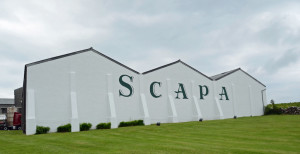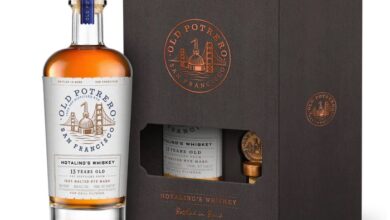Touring Scapa Distillery
By Richard Thomas

(Credit: Richard Thomas)
Even before Publius Aelius Hadrianus, better known simply as Hadrian, decided to keep his legionaries busy by erecting a wall clear across the neck of Britain, Scotland has been synonymous with “remote.” Much of it became less so over time, first as the mainstream of Europe shifted north and then with unification with England, but even today the fringes of Scotland remain the places to go in Western Europe if you are well and truly looking to get away from it all.
One of those fringe places to go are the Orkneys, the islands lying just beyond the northern tip of Britain. The next stop beyond the Orkneys are the Shetlands, followed by Iceland, and a whole lot of icy water lies in between. During the summer months these islands have a wishlist of qualities that so many seasoned travelers are looking for: history (the Ring of Brodgar, as impressive as and predating Stonehenge), gorgeous rural beauty, great food, and most importantly, no crowds.

(Credit: Richard Thomas)
For the whisky traveller or the curious, there are also two of Scotland’s most extreme distilleries. It’s northernmost, Highland Park, is found in the main Orkeny town of Kirkwall. The other calls on that word again, “remote,” since Scapa Distillery is located on a scenic inlet removed from civilization, on an island already far away from everything.
Scapa enjoys two additional distinctions beyond its remoteness. The first is that this is a small distillery, operated with little automation and on a very human scale. Scapa dates to 1885, and the brief tour of the facility certainly gives an antique feel, where one has a 19th Century rafter over a milling machine from the 1950s. While there are buttons to push, there are also valves to open and close by hand, and whisky-making is done from mashing to pumping spirit into tanker trucks by a small crew working in sequence, step by step. This is not a place where most of the work is run from a computer console.
The other distinction is a point that should make Scapa, opened to visitors for the first time only in 2015, a must-see destination for whisky nerds is that one of its two stills is a Lohman still, the only working example of its kind. The Lohman design allows for the insertion of copper plates into the cylindrical neck of the still, changing its characteristics and thus the flavor of the new make spirit. This feature is not in use and is not likely to be used in the future, but the Lohman still has the allure of a working piece of antique machinery.

(Credit: Richard Thomas)
Driving up to Scapa from Kirkwall means the anti-climax of coming upon the distillery directly, as the first thing you see is a non-descript collection of field stone and whitewashed buildings. This is a place that truly presents its face out to sea, so once you are done with the tour and have enjoyed a modest tasting, make a point of strolling down into the inlet and onto the beach, and take in the distillery from there. That experience places the distillery into its proper context, into the wind, sea and greenery that define the Orkneys. After all, how can you separate a distillery named for Scapa Flow, the bay that hosted the Royal Navy’s battle fleet through two world wars, from the waters on its doorstep?

